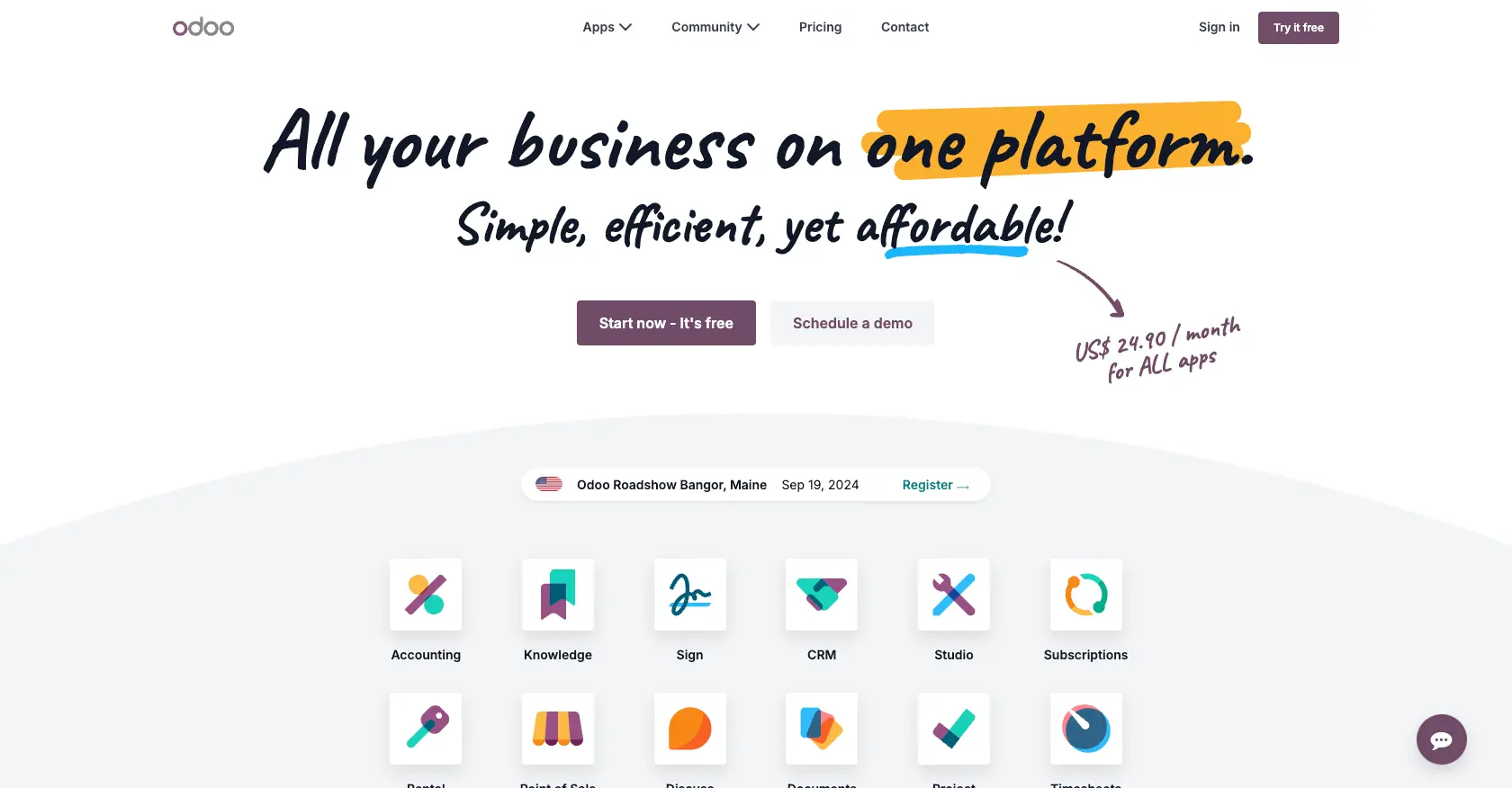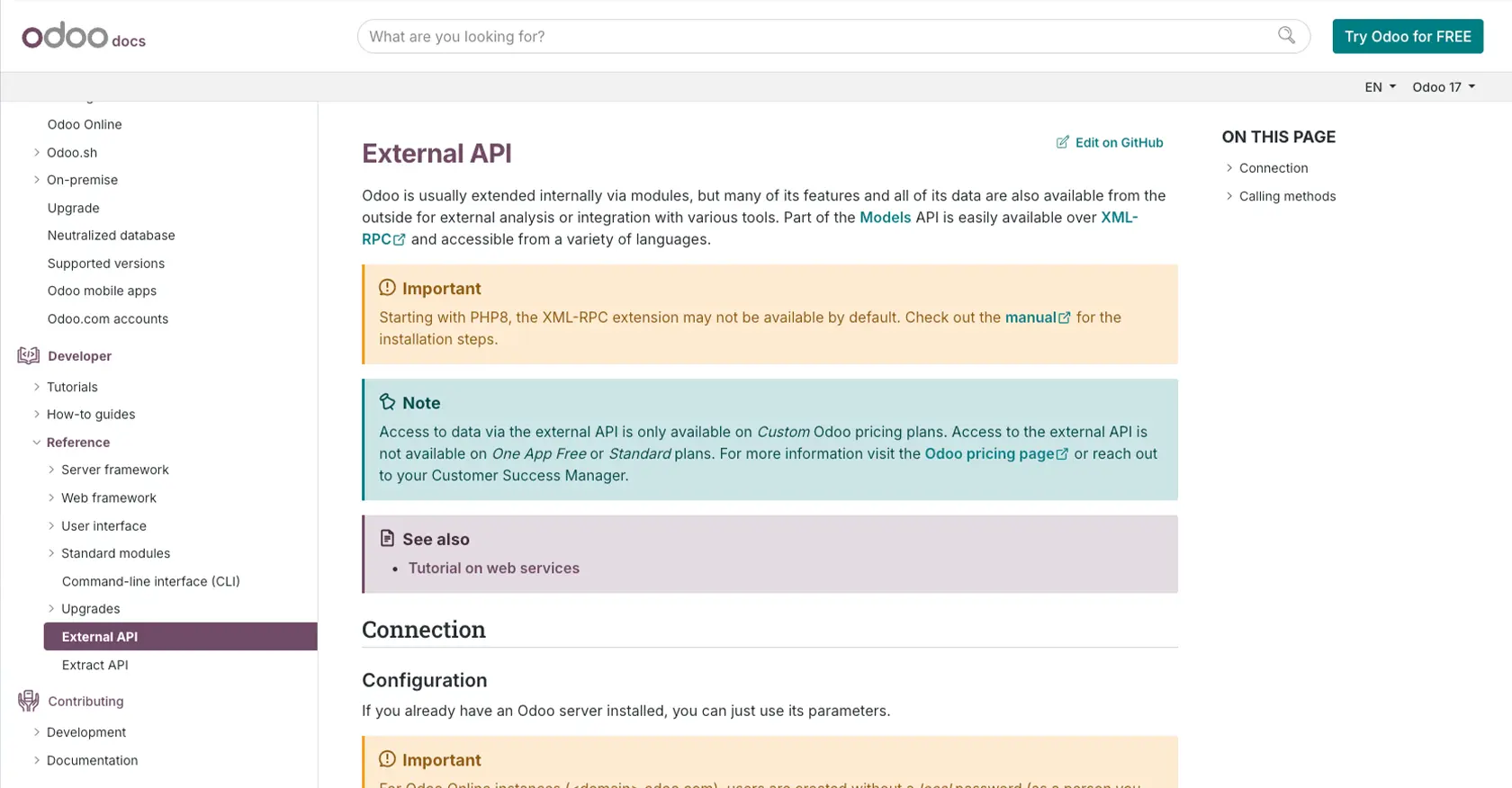Using the Odoo Online API to Create or Update Records (with Python examples)

Introduction to Odoo Online API Integration
Odoo Online is a comprehensive suite of business applications designed to streamline operations across various departments, including sales, inventory, accounting, and human resources. Its modular approach allows businesses to customize their software stack according to specific needs, making it a popular choice for companies seeking flexibility and scalability.
For developers, integrating with the Odoo Online API offers the opportunity to automate and enhance business processes. By creating or updating records programmatically, developers can ensure data consistency and efficiency across different systems. For example, a developer might use the Odoo Online API to automatically update inventory levels based on sales data from an e-commerce platform, ensuring real-time accuracy and reducing manual workload.
Setting Up Your Odoo Online Test/Sandbox Account
Before you can start integrating with the Odoo Online API, you'll need to set up a test or sandbox account. This allows you to experiment with the API without affecting your live data, ensuring a safe environment for development and testing.
Creating an Odoo Online Account
If you don't already have an Odoo Online account, you can sign up for a free trial on the Odoo website. Follow the on-screen instructions to create your account. Once your account is set up, you'll have access to a sandbox environment where you can test API interactions.
Generating API Credentials for Odoo Online
Odoo Online uses a custom authentication method to secure API access. To generate the necessary credentials, follow these steps:
- Log in to your Odoo Online account.
- Navigate to the Settings section from the dashboard.
- Under the Integrations tab, locate the API access settings.
- Create a new API key by clicking on Generate API Key. Make sure to store this key securely, as it will be used to authenticate your API requests.
Configuring OAuth for Odoo Online API Access
If your integration requires OAuth-based authentication, you will need to create an application within your Odoo Online account:
- Go to the Developer section in your account settings.
- Select Create App and fill in the required details, such as the app name and redirect URI.
- Once the app is created, you will receive a Client ID and Client Secret. These credentials are essential for OAuth authentication.
With your test account and API credentials ready, you can now proceed to make API calls to create or update records in Odoo Online. This setup ensures that you have a secure and isolated environment to develop and test your integration solutions.

sbb-itb-96038d7
Making API Calls to Odoo Online Using Python
To interact with the Odoo Online API, you'll need to use Python to make HTTP requests. This section will guide you through the process of setting up your environment, writing the necessary code, and handling responses effectively.
Setting Up Your Python Environment for Odoo Online API
Before making API calls, ensure you have Python installed on your machine. This tutorial uses Python 3.11.1. Additionally, you'll need the requests library to handle HTTP requests. Install it using the following command:
pip install requestsCreating or Updating Records with Odoo Online API
Once your environment is set up, you can proceed to create or update records in Odoo Online. Below is a Python example demonstrating how to make these API calls.
import requests
# Set the API endpoint and headers
url = "https://your-odoo-instance.com/api/endpoint"
headers = {
"Content-Type": "application/json",
"Authorization": "Bearer Your_API_Key"
}
# Define the data for creating or updating a record
data = {
"model": "your.model.name",
"fields": {
"field_name": "value",
"another_field": "another_value"
}
}
# Make a POST request to create or update the record
response = requests.post(url, json=data, headers=headers)
# Check the response status
if response.status_code == 200:
print("Record created/updated successfully:", response.json())
else:
print("Failed to create/update record:", response.status_code, response.text)
Replace Your_API_Key with the API key you generated earlier. The url should be the endpoint specific to the record type you are interacting with.
Verifying API Call Success in Odoo Online
After executing the code, verify the success of your API call by checking the Odoo Online sandbox environment. If you created a new record, it should appear in the relevant module. For updates, ensure the changes reflect accurately.
Handling Errors and Common Error Codes
When making API calls, it's crucial to handle potential errors. Common HTTP status codes you might encounter include:
- 200 OK: The request was successful.
- 400 Bad Request: The request was malformed. Check your data and try again.
- 401 Unauthorized: Authentication failed. Verify your API key.
- 403 Forbidden: You do not have permission to access the resource.
- 404 Not Found: The requested resource does not exist.
Implement error handling in your code to manage these responses effectively.
Conclusion and Best Practices for Odoo Online API Integration
Integrating with the Odoo Online API offers significant advantages for automating business processes and ensuring data consistency across platforms. By following the steps outlined in this guide, developers can efficiently create or update records using Python, enhancing operational efficiency.
Best Practices for Secure and Efficient Odoo Online API Usage
- Secure API Credentials: Always store your API keys and OAuth credentials securely. Consider using environment variables or a secure vault to manage sensitive information.
- Handle Rate Limiting: Be mindful of Odoo Online's rate limits to avoid service disruptions. Implement exponential backoff strategies to manage retries effectively.
- Data Standardization: Ensure data fields are standardized before making API calls. This practice helps maintain data integrity across different systems.
- Error Handling: Implement robust error handling to manage API response codes and exceptions. This will improve the reliability of your integration.
Streamline Your Integrations with Endgrate
While integrating with Odoo Online can be rewarding, managing multiple integrations can become complex and time-consuming. Endgrate simplifies this process by providing a unified API endpoint that connects to various platforms, including Odoo Online.
By leveraging Endgrate, developers can focus on core product development while outsourcing integration complexities. This approach not only saves time and resources but also enhances the integration experience for your customers.
Explore how Endgrate can transform your integration strategy by visiting Endgrate today.
Read More
Ready to get started?
